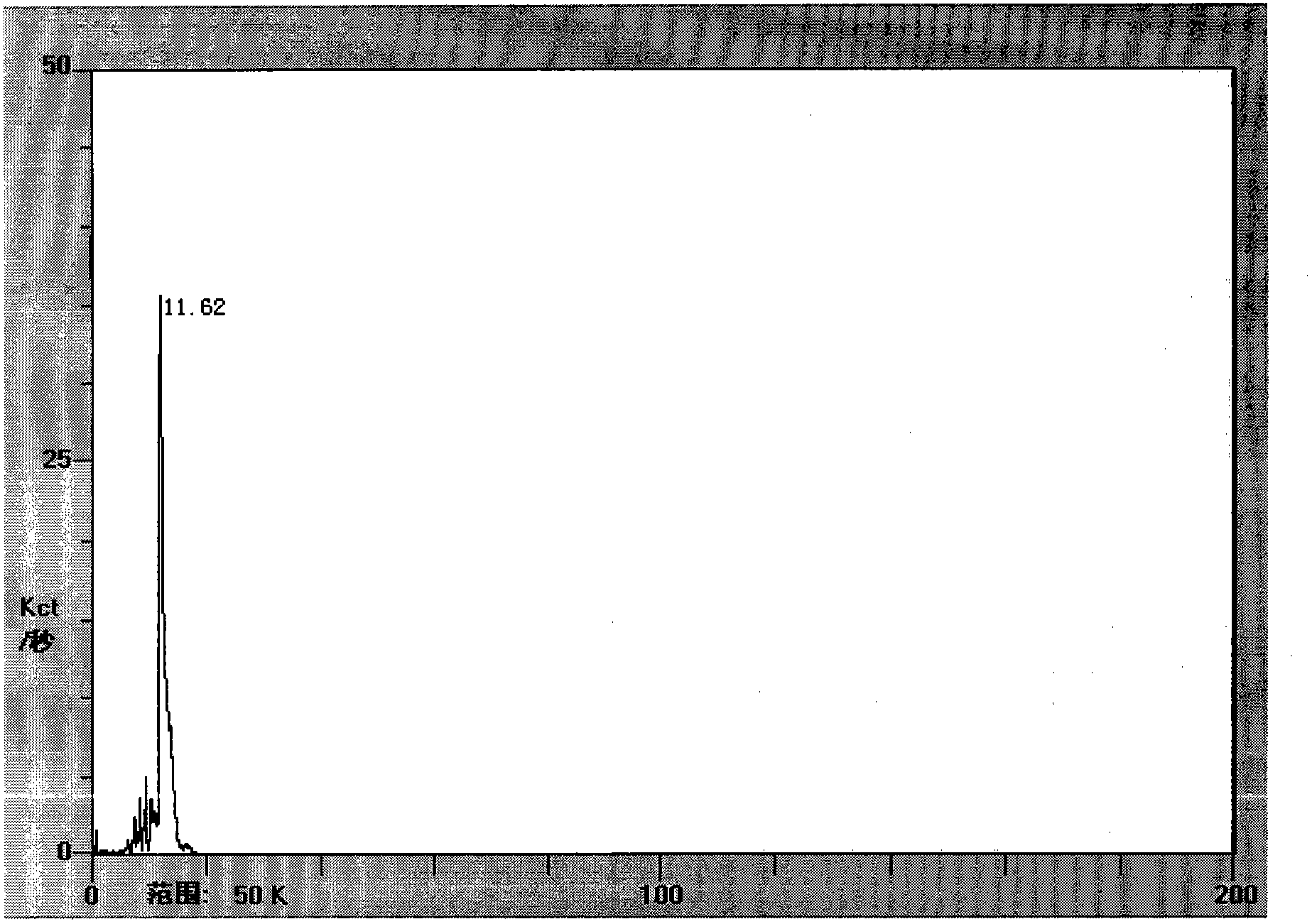Gas chromatography-surface acoustic wave rapid analysis and determination method for aldehyde and ketone materials
A technology of gas chromatography and surface acoustic wave, which is applied in the field of instrument analysis, can solve the problems of long analysis time and inability to realize on-site analysis, and achieve the effects of short analysis time, improved analysis sensitivity and convenient operation
- Summary
- Abstract
- Description
- Claims
- Application Information
AI Technical Summary
Problems solved by technology
Method used
Image
Examples
Embodiment 1
[0019] Adopt GC-SAW (Gas Chromatography-Surface Acoustic Wave) fast analyzer, in which the GC part is mainly composed of sample collection system: including sample sampling tube and thermal desorption device for sample tube heating; sampling and analysis state switching system: six-way A valve and its switching device; a sample separation system: a chromatographic column and a chromatographic column temperature control device; and a carrier gas flow control system.
[0020] Surface acoustic wave sensor: The substrate is ST-X quartz crystal, the center frequency of the resonator is 516.5MHz, and the temperature control range of semiconductor refrigeration is -10℃~150℃.
[0021] Instrument conditions: sampling port temperature: 200°C; valve box temperature 165°C; chromatographic column temperature: 40-180°C, programmed temperature, heating rate: 10°C / s; sensor temperature 60°C; carrier gas using helium, carrier gas flow rate 3mL / min.
[0022] Sampling device: sample collection ...
Embodiment 2
[0036] Determination of the minimum detectable concentration of aldehydes and ketones by gas chromatography-surface acoustic wave rapid analyzer.
[0037] The experimental conditions and sample preparation were the same as those in Example 1, and the mass corresponding to 3 times the baseline noise response value was taken as the minimum detection amount of the instrument. The experimental results are as follows:
[0038] name
Minimum detection mass μg
3.8×10 -7
7.7×10 -7
8.03×10 -7
6.93×10 -7
[0039] When a 10L air sample was collected with a DNPH tube, and then eluted with 4 mL of acetonitrile, 0.2 μL of the eluted sample was taken for analysis, the retention time was qualitative, and the peak area was quantitative. The minimum detection concentration of aldehydes and ketones by this method is:
[0040] name
Embodiment 3
[0042] Experimental conditions: the flow rate of the carrier gas is 3-10 mL / min, the temperature of the chromatographic column is 40-230 °C, and the temperature of the sensor is 10-80 °C. The experimental apparatus and other experimental conditions are the same as those in Example 1.
[0043] Select a decorated room, adopt the method of the present invention to detect the formaldehyde content in the air:
[0044] (1) Instrument calibration
[0045] Take a standard solution with a concentration of 1 mg / mL formaldehyde phenylhydrazone, dilute it by 200 times, 100 times, 50 times, and 20 times, respectively, and then inject and analyze at each concentration point. The injection volume is 0.2 μL, and the peak area is recorded. A standard working curve was obtained by performing a least squares regression on the peak area by mass.
[0046] (2) Sample collection
[0047] At the sampling site, take a sampling tube coated with 2,4-dinitrophenylhydrazine (fill a 10mL medical syringe...
PUM
 Login to View More
Login to View More Abstract
Description
Claims
Application Information
 Login to View More
Login to View More - R&D Engineer
- R&D Manager
- IP Professional
- Industry Leading Data Capabilities
- Powerful AI technology
- Patent DNA Extraction
Browse by: Latest US Patents, China's latest patents, Technical Efficacy Thesaurus, Application Domain, Technology Topic, Popular Technical Reports.
© 2024 PatSnap. All rights reserved.Legal|Privacy policy|Modern Slavery Act Transparency Statement|Sitemap|About US| Contact US: help@patsnap.com










